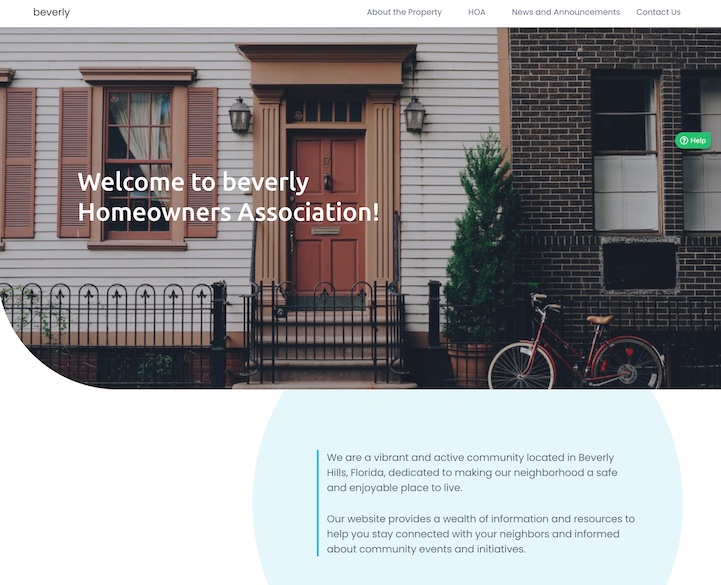 Photo from Neighborhood.online
Photo from Neighborhood.onlineOriginally Posted On: https://neighborhood.online/blog/hoa-website
A well-crafted and strategically designed website has become a fundamental asset for Homeowners Associations (HOAs) seeking to effectively manage their communities. By establishing a strong online presence, HOAs can establish transparent and efficient communication channels, provide valuable resources, and foster community engagement. This blog post explores the significance of leveraging best practices in content creation and design to unlock the full potential your websites, enabling HOAs to deliver an exceptional user experience, build trust, and drive community growth and connectivity.
Importance of HOA Websites in Modern Community ManagementHomeowners association websites are a vital tool in this modern era, providing a centralized platform where residents can access important information, stay informed about community updates, and actively participate in community affairs. A well-designed website acts as a digital front door, welcoming residents and offering a convenient and accessible space for community engagement.
Benefits of HOA WebsitesOnline communications bring numerous benefits to both the association and its residents. A user-friendly and informative website establishes trust and credibility, instilling a sense of confidence in the community’s management. It enhances communication channels, ensuring residents can easily find important documents, announcements, and event details. An optimized website fosters community engagement by providing interactive features such as online forums, surveys, and calendars. A great website can boost property values.
What Is the Purpose of an HOA Website?The purpose of a Homeowners Association (HOA) website is multifaceted, designed to serve both the association itself and its residents in a variety of ways. At its core, an HOA website acts as a central hub for communication, information sharing, and community engagement. It plays a pivotal role in ensuring transparent communication within the community, building trust and credibility in the association’s management, and enhancing engagement among residents. Additionally, it provides a user-friendly experience and assists in compliance with state laws and regulations, such as the Florida Condo Website Law.
Here’s a comprehensive bullet list summarizing the key purposes and benefits:
- Transparent Communication: Provides a centralized platform for residents to access essential information, community updates, and event details.
- Building Trust and Credibility: Demonstrates the association’s commitment to openness and accessibility, fostering trust and confidence in the management’s capabilities.
- Enhanced Communication Channels: Facilitates easy access to important documents such as bylaws, regulations, and architectural guidelines.
- Community Engagement: Encourages community engagement through interactive features like online forums, surveys, and event calendars.
- User-Friendly Experience: Provides a well-structured and aesthetically pleasing website design.
- Compliance with State Laws: Ensures compliance with state laws and regulations by making relevant legal documents and information easily accessible to residents.
These purposes collectively make an HOA website a valuable resource for both the association and its residents, fostering a sense of community and transparency while facilitating efficient management and compliance with legal obligations.
Content Strategy for HOA WebsitesA well-defined content strategy is crucial for a website to effectively inform, engage, and support the community. Here’s a breakdown of the content strategy:
Home Page- Welcome message: Provide a warm and inviting introduction to the HOA.
- Highlights: Showcase key features, amenities, and benefits of living in the community.
- Latest News and Updates: Share important community announcements, upcoming events, and recent achievements.

About Us
- Mission and Values: Clearly define the purpose and core values of the HOA.
- Board Members: Introduce the board members and their roles in the community.
- History: Share the history and milestones of the HOA.

Community Information
- Rules and Regulations: Clearly outline the community guidelines, bylaws, and regulations.
- Amenities: Highlight the community amenities such as parks, pools, and recreational facilities.
- Events and Activities: Provide a calendar or list of upcoming events and activities within the community.
- Local Resources: Share information about nearby schools, hospitals, shopping centers, and public transportation.
- Bylaws and Covenants: Make important HOA documents easily accessible for homeowners to reference.
- Forms and Applications: Provide downloadable forms for architectural requests, maintenance requests, and other necessary applications.
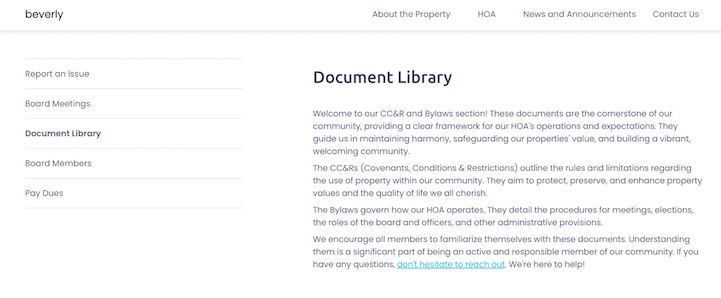
Create a comprehensive FAQ section to address common queries from homeowners regarding HOA processes, rules, and services.
Include information on assessments, dues, maintenance responsibilities, and dispute resolution.
Resources and Education- Educational Articles: Publish informative articles on topics such as home maintenance tips, landscaping guidelines, and community living.
- Helpful Links: Provide links to relevant resources, such as local government websites, utility providers, and community services.
- Contact Details: Display clear contact information for the HOA board, management company, and relevant committees.
- Feedback and Support: Offer a form or email address for homeowners to provide feedback, suggestions, or report issues.
Remember to regularly update the content on your HOA website, keep it user-friendly, and ensure it aligns with the goals and values of the homeowners association.
Design Principles for HOA WebsitesEffective design principles play a crucial role in enhancing the user experience:
- User-Friendly and Intuitive Navigation: Ensuring that residents can easily navigate the website and find the information they need without confusion or frustration.
- Responsive Design for Mobile Optimization: Adapting the website layout and functionality to provide an optimal viewing experience across various devices, including smartphones and tablets.
- Consistent Branding and Visual Identity: Establishing a cohesive and recognizable brand presence that aligns with the HOA’s mission and values.
- Accessibility Considerations for All Users: Implementing features and design elements that cater to individuals with disabilities, ensuring inclusivity and equal access to information.
- Incorporating Engaging Multimedia Elements: Utilizing visuals, such as images, videos, and interactive elements, to enhance engagement and make content more compelling.
Here are a few real-world examples that effectively implement the content and design principles discussed:
Burntwood West Home Owners Association Website- Website: https://www.burntwoodwest.com/
- Highlights: The website welcomes visitors with a vibrant homepage featuring images of the community’s amenities. It includes a news section for updates and a clear navigation menu.
- Burntwood West stands out for its user-friendly document management system, making it effortless for residents to access important CC&Rs and other community documents with just a few clicks.
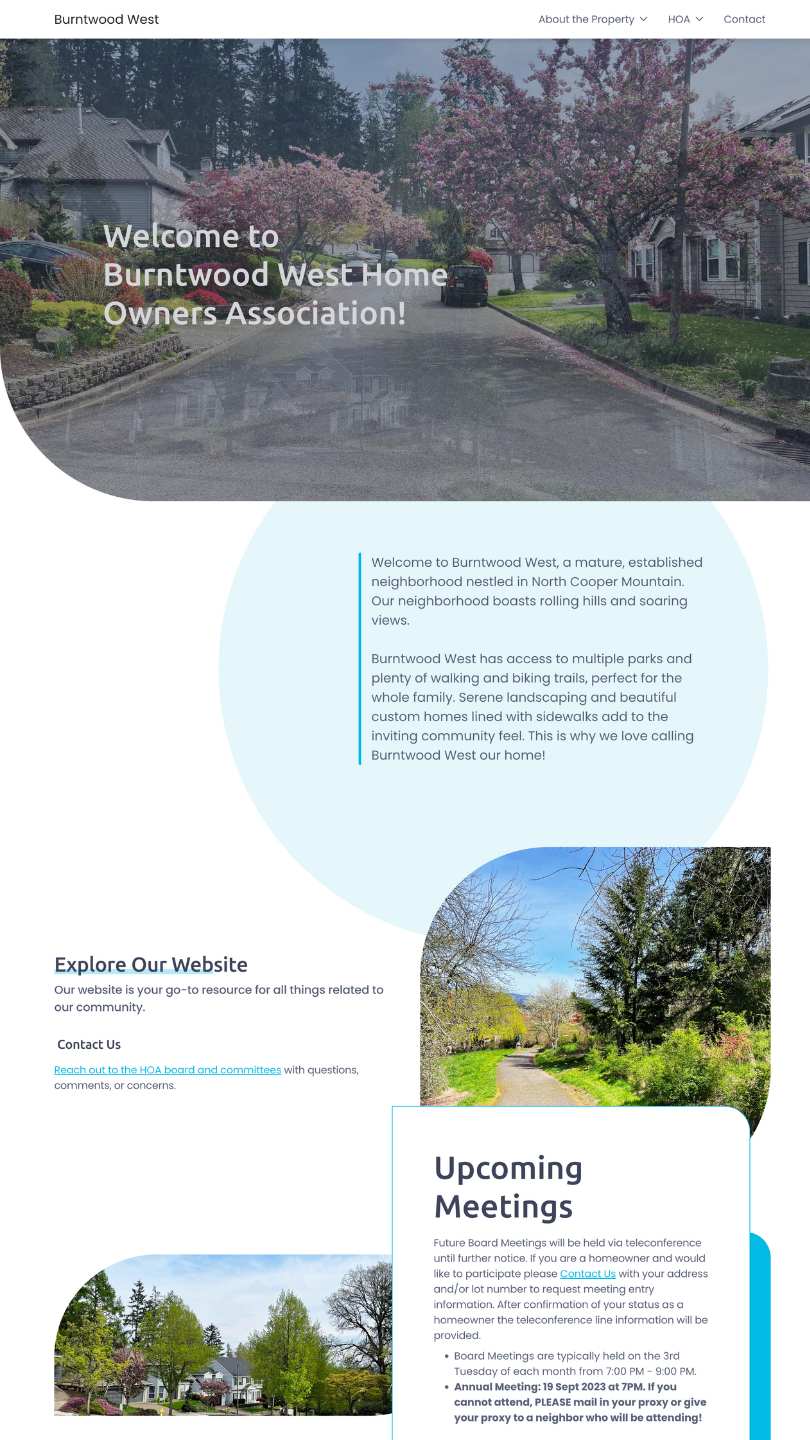
- Community Information: This website provides comprehensive information on community rules, amenities, and upcoming events. It also offers downloadable forms and a detailed FAQ section.
- Soothing Visuals: The “Harbor Hues Blue” template greets visitors with tranquil and inviting shades of blue, creating a sense of calm and community. The imagery reflects the association’s commitment to a serene living environment.
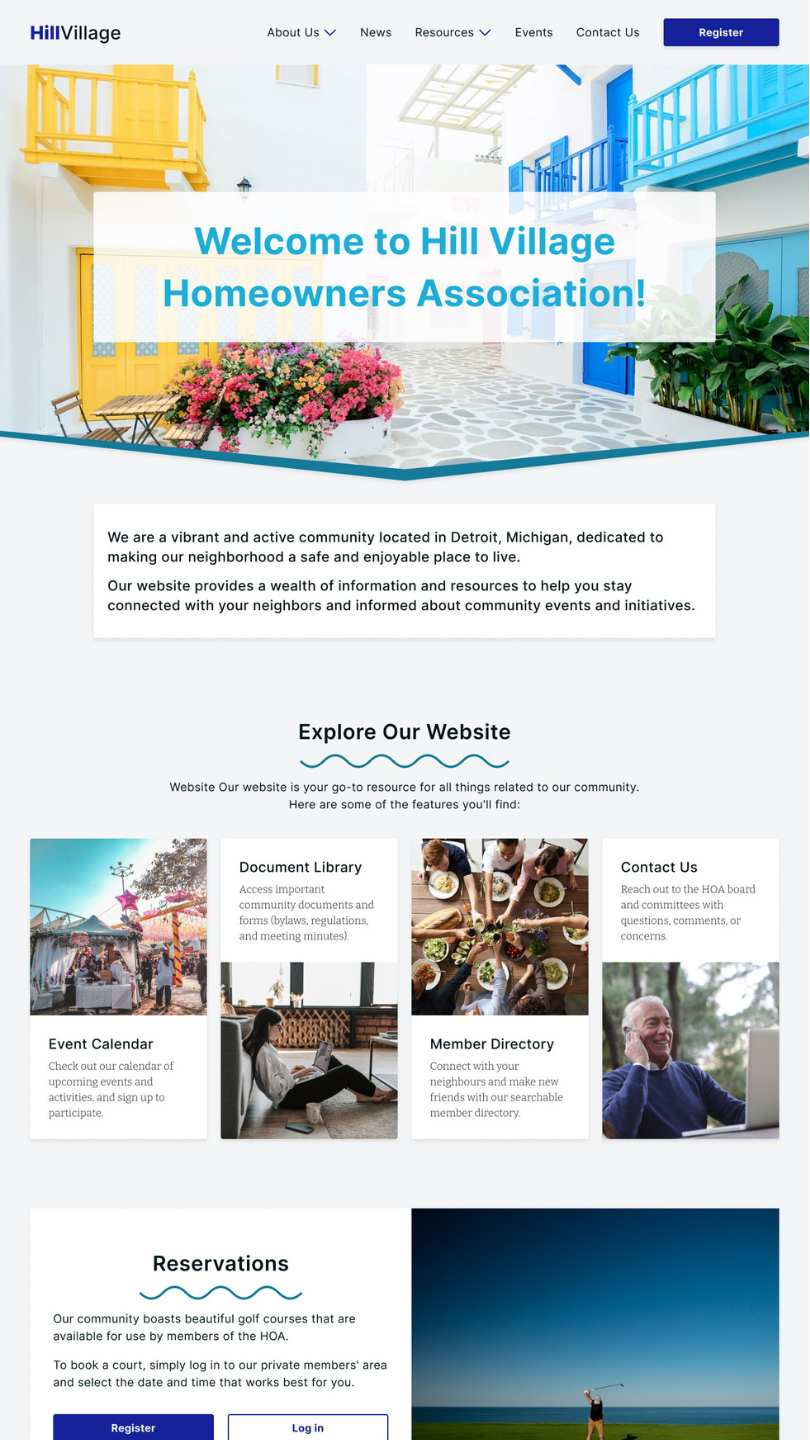
- Resources and Education: Maplewood Village HOA’s website features a blog with articles on landscaping tips, maintenance guides, and community news.
- Professional and Clean Design: This template showcases a professional and clean design with bold borders. It’s the perfect choice for a straightforward and easy-to-navigate website.
- Clean and Organized Layout: The default design ensures that essential community information is presented in an organized and user-friendly manner.
- Aesthetic Simplicity: The use of bold borders adds a touch of sophistication while maintaining simplicity. It’s an ideal template for associations that prioritize clarity and professionalism.
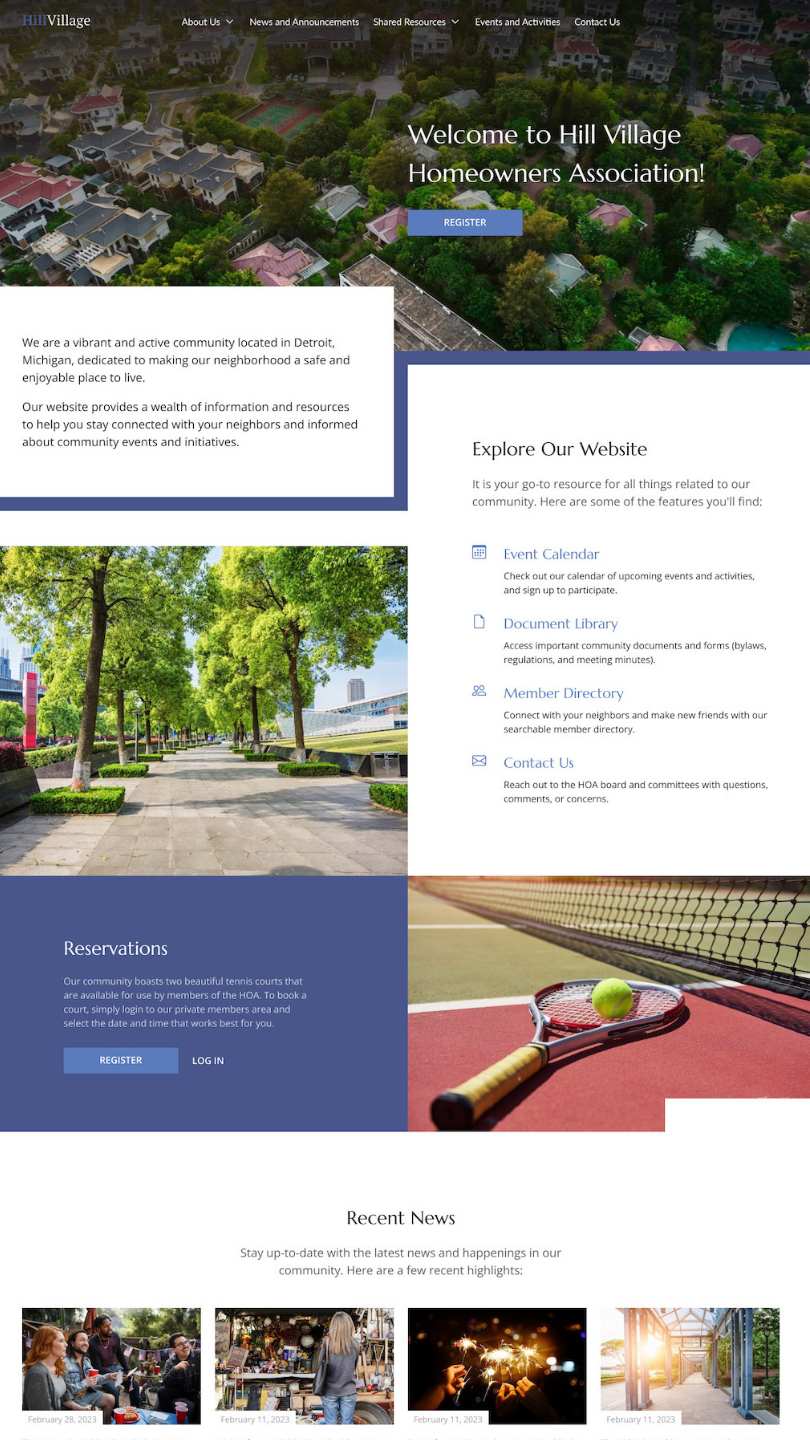
In conclusion, maximizing the potential of HOA websites through best practices in content creation and design is essential for HOAs to effectively communicate, engage with residents, and drive community growth. By implementing a strategic content strategy, incorporating user-friendly design principles, and optimizing for search engines, HOAs can create an exceptional online experience that fosters community connectivity, trust, and engagement. By embracing the power of HOA websites, HOAs can unlock the true potential of digital platforms, enhancing their ability to serve the community and create a thriving and connected neighborhood.
